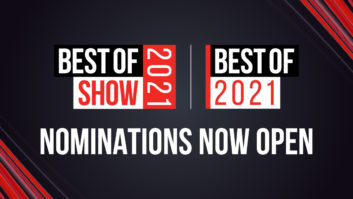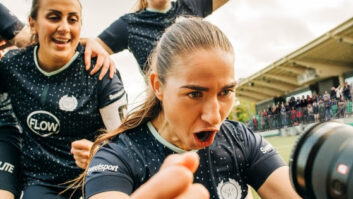In recent years the use of cinematic lenses and cameras has become more prevalent in live sports broadcasting.
The Super Bowl, La Liga and next year’s Olympic Games are among the tier-one sports employing cinematic technology to bring their viewers closer to the action.
But why is the technology seeing broader adoption, how does it enhance the viewing experience, and how will the trend continue? TVBEurope spoke to a cinematic lens manufacturer, service provider and leading sports broadcaster to get their thoughts.
The lens manufacturer: Carey Duffy, director of product experience, Cooke Optics
Why do you think using cinematic technology has become so important to sports broadcasters in recent years?
Cinematic technology of one sort or another has always been present in capturing sports. If the question relates to the quality of the image. My personal opinion is that sporting bodies and broadcasters are understandably trying to enhance their offering. Certain cinematic techniques add a layer of emotion that goes beyond just recording an image. If we are talking about the use of lenses. One has to know about the characteristics of a lens series and how they can add dimensionality and texture to the image, which will have a bearing on the outcome of the images captured. This is what cinematographers spend their working lives trying to perfect for the stories they are employed to capture.
How do you think it enhances the viewing experience?
For me that only happens when the correct tech is used sympathetically to enhance the brief. For example in the FIFA World Cup, fast lenses were used at wide open T stop, to separate the players in the tunnel pre-match from the background and add dimensionality. To me the images looked plastic! There was no organic dimensionality because they were using cheap auto-focus photographic lenses that don’t have soul or character in them. Obviously the idea was to make it look cinematic, so someone decided that this tech was “good enough”. That’s where using the wrong tech which delivers a poor version of the nuanced look of a cinema lens causes issues.
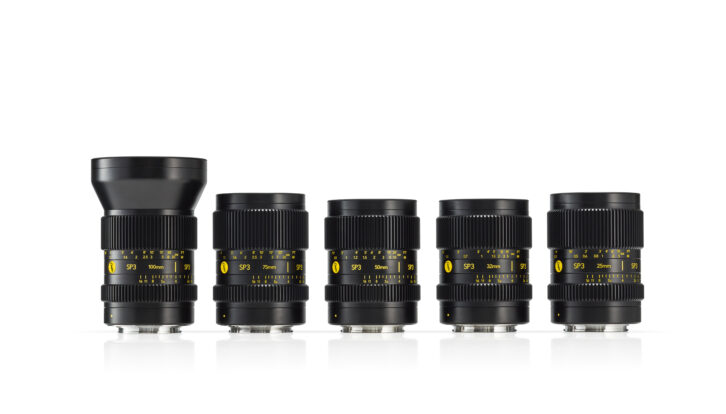
Shallow Depth of Field when used sensitively is a great tool, but used for the sake of using it without craft and technique, is not cinematic. It can even be detrimental to what you are trying to capture, as cutting between shallow depth of field and deep depth of field can be visually off-putting. Also one has to consider the environment you are filming in and how cinematic techniques can enhance the viewing experience. One thing for certain is that people want to look good or have a flattering representation of themselves portrayed on screen – this is where our lenses excel.
How do you see this trend continuing?
I see sensitive people embracing the technology to do great work, whilst others will use simple tricks to try and attempt to deliver what they see as a cinematic image.
Tell us about your cinematic technology.
Cooke lenses are renowned for capturing motion images in an organic and flattering way, especially faces. After all, when someone is speaking we tend to spend our time focusing on their face. In that environment, our lenses offer a unique look. That’s the design philosophy we employ in our lens series, it’s to lesser or greater degrees depending on the optical design of a series – but that’s what defines the Cooke Look.
The production company: Martyn Edwards, project director, EMG
Why do you think using cinematic technology has become so important to sports broadcasters in recent years?
New technological developments make it a possibility now, including RF technology. Shooting on film had its advantages in the old days, such as sharpness, depth of field, and colour gamut, but it also had disadvantages, such as time and cost for development. In the case of live sport, using film was extremely challenging and multi-camera switching was out of the question. With today’s cameras and technology we can use cinematic lenses as part of a ‘regular’ multicamera environment. In particular we can now use cinematic cameras and lenses for depth of field and so-called ‘bokeh’ to create interesting effects.
How do you think it enhances the viewing experience?
It enhances the viewing experience with dramatic effects and adds perhaps a little bit of artistry to the world of live sport. Within the last decade producers have tried to push the boundaries of what is possible to achieve a cinematic representation within broadcast. This approach offers a live event the same sense of visual gravitas as a cinematic experience. Surely a live event deserves that attention to detail? Especially when you think of the impact that key moments in sport have had on a fan’s life. The shift towards a more cinematic approach enhances the viewer experience and sets milestone moments apart from traditional coverage.
How do you see this trend continuing?
Historically technology suppliers have been limited by what is suitable to integrate into the broadcast environment. For us at EMG, a more cinematic method started out in concerts and one-off events, using cameras like the Alexa in a standard HD environment, with Copperhead camera backs.
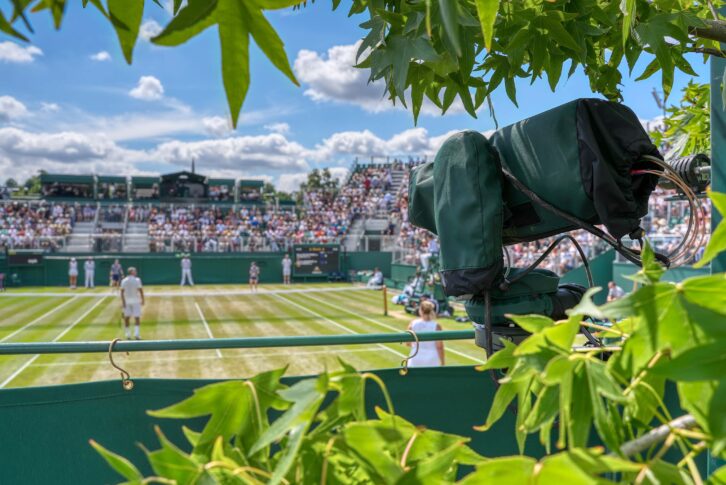
In recent years companies like Amazon and Netflix have pushed for specific UHD and HDR workflows, demanding higher-quality broadcasts and driving advancements in both broadcast equipment and workflows. As consumer expectations shift, equipment manufacturers have responded to the demands of broadcasters by developing cameras that offer both cinematic and broadcast capabilities. Moving forward the adoption of new lens technology will continue to drive change, as equipment for large live productions, designed to work with cinematic cameras, become more widespread.
Tell us about the cinematic technology you employ.
Equipment manufacturers are answering the calls of cutting-edge broadcasters, so that the boundaries between broadcast and cinematic workflows are not just blurred, but removed entirely. The new Sony F5500 cameras offer a 35mm sensor within a broadcast camera body.
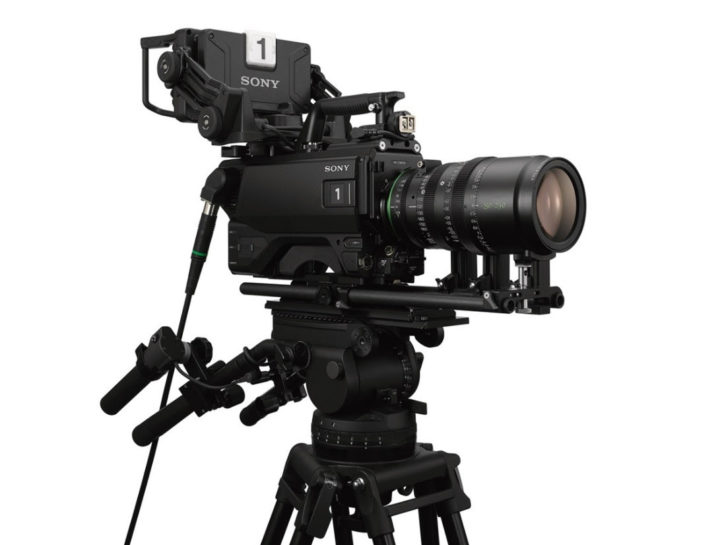
The F5500 has the features of a studio camera, with cinematic and colour space enhancements. The Sony camera will slot into a broadcast workflow, from baseband to 2110 and they take no longer to setup, rig and record than any standard broadcast camera. Until recently broadcast box lenses were generally used with a B4 mount together with a PL adapter so it could be used on a high sensor camera but the drawback on this rig is loss of light. Now, lenses are becoming available as dedicated PL mount box lenses, such as the Fujinon HZK25-1000mm, making it one step easier to work with cinematic cameras for live event projects. HETV Broadcasters have changed the way a production and technical supplier team approaches a project. They now start with a list of very specific requirements and then ask how EMG can use our knowledge, equipment, and experience, to fulfil those needs. The journey is always a partnership, often with tremendous amounts of testing, subjective assessments and frank discussions regarding cost and reward.
The broadcaster: Gordan Roxburgh, head of department, Sky Sports Commercial
As the imaging technology and controllability evolve, alongside the move to progressive HDR shooting in sports broadcasting, we have been able to match cinematic cameras much closer with the traditional live broadcast cameras, giving the director the ability to use cinematic cameras to further capture the emotion and glamour of high-profile sporting events we cover, drawing the viewer deeper and closer to the event via their big screen.
As this technology and aesthetic becomes more part of the everyday experience of our customers, through use on social, and streaming platforms, we need to evaluate how much we want to reflect the shift, and where it adds value to our output.
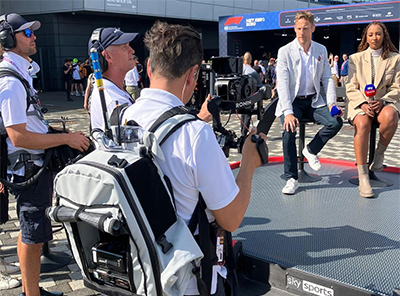
In live event broadcasting we’re mindful that the background is often as important as the foreground, so striking the balance between great cinematography and broadcasting the event is vital to us.
As the broadcast ENG crews refresh their equipment away from the traditional shoulder mount camcorders into EFP/Cine style cameras, we have more scope to deploy cinematic on more events across various strands, where traditionally a broadcast camera would have been the preference previously.



